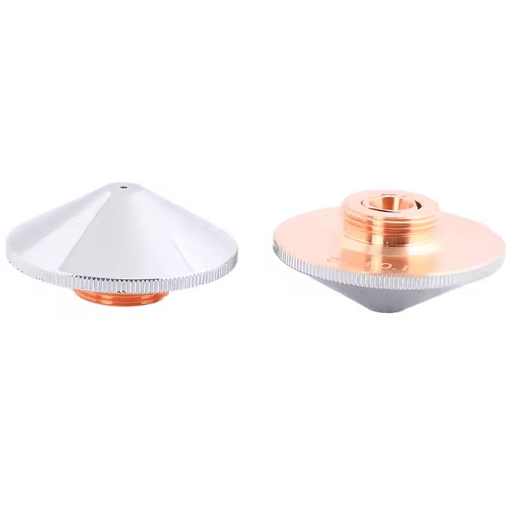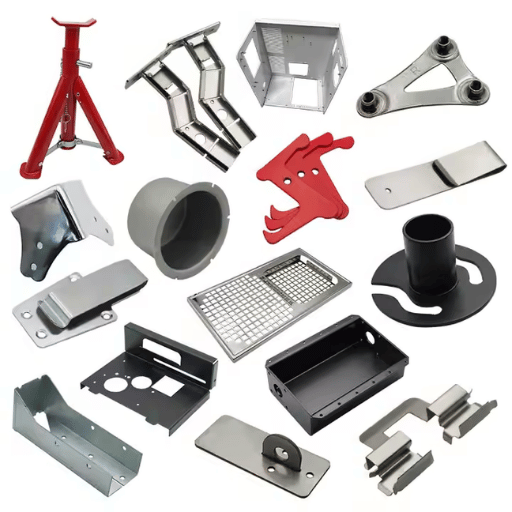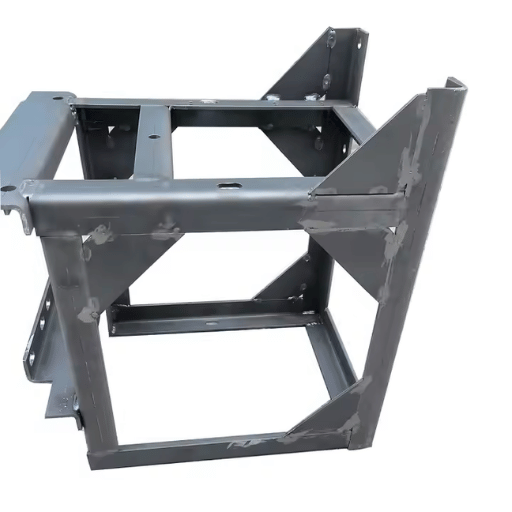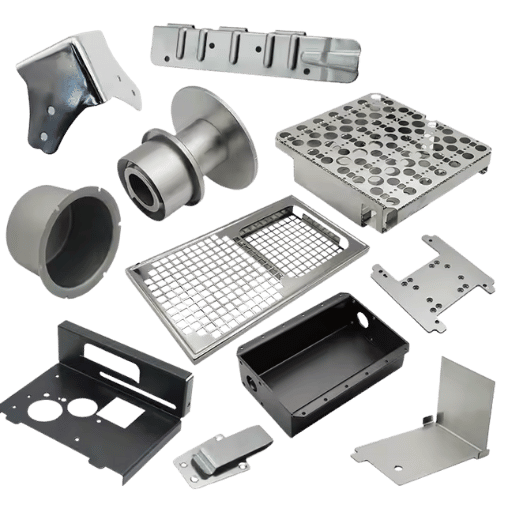Fly cutting is one of the new advancements in the fiber laser systems field. This modern method of cutting, machining and wire stripping earns its prominence from its speed and accuracy. Industries that handle metals and composites require exceptionally high precision cuts. This article discusses the basic principles of fly axis cutting, its application with fiber lasers, and its benefits. Understanding its application and benefits will help the readers understand how this technique improves production processes and overall machining efficiency. This blog is meant for all levels, be it a knowledgeable technician or a seasoned manufacturer, and will provide all the information necessary to utilize the uses of fly cutting in your business.
What is the Terminology Fly Cutting in Fiber Laser Technology?

In the context of fiber lasers, fly cutting is a form of high speed laser cutting in which the laser moves over the material without stopping between cuts. The purpose of this method is to increase productivity by lowering cycle time. This is especially true for thin sheet metals and materials with repetitive cutting workflows. With the help of lasers, speed optimization, and advanced mechanical systems, fly cutting eliminates operational and wait time while achieving high quality production that demands precision.
What are the Basics of Fiber Laser Technology
Fiber lasers operate on the principles of amplified stimulated emission and employs a doped optical fiber like ytterbium or erbium. The gain medium is the active part of the laser, while the pump diode is responsible for stimulating the dopant ions in the fiber, producing a coherent beam called laser light. Compared to other types of lasers, fiber lasers are much more efficient, compact, and capable of high power operation.
- Wavelength Range: Often found between 1,030 nm to 1,080 nm.
- Power Output: Tailored to specific needs, it can range from a few watts to several kilowatts.
- Beam Quality (M² factor): for single-mode fiber lasers, achieved beam quality is less than 1.1 which guarantees high precision mark and cut operations.
- Efficiency: Fber lasers demonstragte higher energy efficiency over CO2 lasers with a 35% electrical-to-optical conversion efficiency.
- Lifespan: AMD’s rugged solid-state design lends fiber lasers over 100,000 hours of operational lifespan.
- Precision and reliability are why automotive, aerospace, and electronics industries benefit from fiber lasers the most.
The Variation of Fly Cut from Conventional Approaches
Fly cutting, as an example, is different from traditional milling in terms of efficiency, surface finish and tool configuration. With traditional machining processes, cutting tools tend to be multi-tooth. With fly cutting, a single-point tool affixed to a rotating spindle is utilized. This makes it possible to effectively machine large flat surfaces with great . Unlike traditional machining processes, fly cutting is more effective when it comes to fine finishes, which means that less tool mark irregularities are present compared to multi-tooth milling operations. In addition, fly cutting is a customizable method, allowing for greater changes to be made to the angles of tools and feeds. Although slow with respect to conventional processes for high-volume production, fly cutting is far better for accuracy in critical parts making it very common in aerospace and automotive industries where extreme tolerances and high quality surfaces are essential.
Considering the Flight Cutting Mechanism on the Movement of the Laser Beam
In the case of analysis relating to the movement of the laser in fly cutting, factors like precision and velocity are fundamental metrics. A laser beam is steered with computer-driven systems performing with submicron accuracy of positioning for coarse and repeatable outcomes. Usually, the laser path contains straight or rotative coordinated motion alignment with the cutting tool to generate a clean and balanced machining pattern.
Reports have shown modern data suggest that sophisticated laser systems can achieve cut widths of 50 microns while maintaining tolerances of ±2 microns. In addition, cutting speeds also vary with the type of material and its thickness. For thin, reflective metals such as aluminum and titanium, cutting speeds can reach up to 3 meters per second. These capabilities showcase the versatility of the laser in accomplishing edge processing without burrs or thermal damage and emphasizes the growing demand for its use in high-precision manufacturing processes.
What Are the Advantages of Fly Laser Cutting?

The Benefits of Fly Cutting in Keeping Cutting Duration and Tool Wear to a Minimum
Fly laser cutting has several benefits related to efficiency, accuracy, and longevity. Here is a summary of advantages:
- With fly laser cutting, timings for cutting are largely reduced due to the uninterrupted motion of the laser.
- Cutting speeds of up to 3 M/sec are possible with thin substrates.
- Provides precision of ±2 microns, resulting in sharp, smooth edges free of burrs.
- Uniform precision over complex intricate shapes.
- As there is no contact in the cutting action, the non-contact cutting method causes no physical wear on tools, thereby reducing upkeep expenses.
- Reduced thermal stresses leads to better overall longevity of the cutting parts.
- These include aluminum, titanium, stainless steel, and other metals that are difficult to cut into.
- All thicknesses of the materials maintain the same quality.
- Accurate material energy delivery increases thermal distortion below the surface.
- Prevents HAZ and protects the work piece.
- Compared to other cutting techniques, this method produces less scraps.
- Such processes have a lower negative impact on the environment.
All things considered, fly laser cutting is a vital industrial cutting technology because it best satisfies the needs of users in terms of speed, precision and efficiency.
Importance of Intelligent Path Optimization
No wonder why cutting laser operations are increasingly adopted within various businesses. Intelligent path optimization contributes to almost all sector applications since it improves cutting operations. Path optimization increases performance and accuracy in laser cutting operations through its complex algorithms which program the head movement in such a way as to limit head travel. In intricate geometries, such an approach can lead to a 30% reduction in cut time, as noted by industry research. In some cases, optimized paths result in decreased operational energy consumption, with certain systems indicating a reduction in power usage of as much as 20%.
Possibly the most important advantage of path optimization is the increase of machine components life span. Reduced head travel translates to a 15 to 20% increase in maintenance intervals, thereby lowering costs associated with maintenance. In addition, proprietary statistics show enhanced material yield of up to 10% less waste in bulk production. The above collectively improves cost and productivity in complex workflows and production processes.
Used on thinner material and highly precise cutting
To capture the full spectrum of advantages some key findings have been listed below:
- Increased maintenance intervals by 15-20% reducing operational and downtime expenses.
- Lowered mechanical strain increased the durability of machine components.
- Material waste minimized by as much as 10%, specifically in large volume production activities.
- Improved efficiency of resource consumption lowers material expenditure and aids green initiatives.
- Precision machining performs within tighter tolerances, enabling more precise fabrication steps.
- Increased operational efficiency translates to shorter cycle times, thereby increasing output volume.
- Total savings from lowered waste and increased life of the equipment.
- Reduced recurring maintenance and material costs lead to lower pricing.
- These factors in total highlight the quantifiable, critical, and strategic benefits of enhanced manufactured metrics.
What Are the Limitations of Fly Laser Cutting?

Problems Associated with Ineffective Cutting Speed
Data: Improper cutting speeds may result in tearing with uneven edges. Research indicates that faster than optimal cutting speeds tend to generate burrs while slower speeds usually overheat the material surface.
- Impact: Poorly defined edges raise the additional required effort and trim work required after processing drives forth the overall production efficacy and net expenditure.
- Data: Gaps in speed focus may lead to gaps in measurement accuracy with regard to high speeds, a 0.1 mm deviation in the tolerance mark was recorded as well.
- Impact: Lower precision impacts instrument accuracy hence could the components might not meet required standards leading to lost processes or reconstruction.
- Data: Cut too slowly will generate and sustain excessive heat which will lead to mechanical warping or micro-cracks in metals and other composites.
- Impact: Mechanical deterioration will undermine operational reliability and product life expectancy.
- Data: Changes in speed cause lasers to work at awkward speeds which enhances the degree of wear on crucial components like lenses and nozzles, causing worse drops, recorded through scenario tests under accelerated speeds lenses and nozzles yield 20-30% lessen lifespan.
- Impact: More frequent maintenance incurs, elevating cost of parts that must be replaced.
- Data: Energy expenditure and averaging from running projects at lasers with wrong other speed parameters showed figures between 15-20% within margins of error.
- Impact: Increasing operational expenditure and further loose because of needless expenditure of energy.
- Data: 18% of unexpected downtime in laser cutting operations is associated with errors caused by miscalibrated speeds.
- Impacts: Delay in schedule and potential revenue loss.
- Addressing and resolving these concerns will enable operators to increase productivity, minimize inefficiencies, and achieve better results in the fly laser cutting processes.
Problems Related to Machine Wear and Maintenance
Operationally, excess machine wear occurs due to lack of adequate servicing or cut schedules as part of a Routine Maintenance Task, and this has an effect on precision and efficiency in laser cutting. Energy inefficiency and low cutting quality may result from poorly maintained optics and moving parts. Research shows that unplanned downtime is mitigated by as much as 30% with the application of predictive maintenance coupled with data analytics and regular check-ups. Operational expense is further reduced when maintenance tasks such as proper lubrication, cleaning, and timely parts replacement or adjustments are performed, improving the overall obsolescence of equipment together with sustained peak performance.
How Does Fiber Laser Technology Enhance Cutting?

Investigating the Capabilities of the Laser Beam
Fiber lasers provide unparalleled speed, versatility, and precision due to their highly focused laser beams. The laser beams produced from fiber optic cables are more energy efficient than standard CO2 lasers. Laser fibers have been proven to cut with speeds three times faster than older systems with the exception of thicker materials. In addition, fiber lasers operate with wall-plug efficiency of 25-30%, cutting energy expenses and cost of operation.
The consistency in the quality of cuts done to varying materials, including stainless steel, aluminum, and brass are attributed to the narrowed spot size onto which the laser can focus the beam. This minimizes the kerf width and the heat-affected zone which lowers material wastage. Fiber lasers can achieve such high precision that the rework rate drops by 40% which highlights the speed and accuracy of the processes.
Working Speed and Efficiency Calculates
Fiber lasers can outperform CO2 lasers by as much as five times in cutting speed for thinner materials like stainless steel or aluminum below 6mm in thickness.
For thicker materials, 15%-30% speed improvements can be expected based on the material and the laser’s power.
Further, the average material saving in the form of reduced material wastage with the narrow kerf width is 20% or more.
This also minimizes post-cutting work, resulting in a more streamlined, efficient workflow.
CO2 lasers have a 40% larger heat-affected zone compared to fiber lasers which in turn makes these lasers more efficient in preserving the cut materials’ structure and preventing thermal distortion.
Economic operational costs in the long run are possible because fiber laser systems work at 30-40% efficiency compared to 10-15% CO2 estimate.
With increased accuracy of the job, the rate of rework needed will decrease by 40%.
These figures emphasize the dominance of fiber lasers and their importance in modern manufacturing systems.
Benefits Compared to More Common Cuts
Fibers can achieve remarkable cutting speeds of up to six times faster than traditional CO2 lasers. For instance, 1kW fiber lasers can cut 1mm stainless steel sheets and achieve speeds 18 meters per minute, while CO2 lasers can only achieve 3 meters per minute.
Accuracy optimization of laser operations is complemented by greater cutting speed. With tolerances as tight as ±0.02 mm, this operational accuracy raises resource efficiency by an estimated 25% in manufacturing workflows.
These benefits combined clearly demonstrate the efficiency, cost reduction, and quality improvement fiber lasers bring to diverse industries.
What Makes Cutting in Fiber Laser Machines Unique?

Comprehending the Dynamics of the Cut Path
Fiber laser machines cuts with unparalleled accuracy due to their unique cutting capabilities which stem from the highly precise beam focus aimed at the cut point which delivers extremely concentrated energy. The precision provided by their focus makes speed cutting and enhanced edge quality achievable. Furthermore, it allows for the processing of metals with high reflectivity and varying thicknesses. The efficiency of these machines is unmatched due to the minimum energy loss, the ability to intricate designs and the desired outcome for most industrial purposes.
The Science Behind Absorbing Lazer
The material’s optical characteristics such as reflectivity, absorptivity, and thermal conductivity are usually the primary factors impacting laser absorption. The presence of metals that have high reflectivity such as aluminum and copper hinder operations due to their low initial energy absorption from the laser. To overcome these problems, most manufacturers tend to use widely accepted solutions like preheating the material, coating the surface with a particular material, or using special design lasers that work well with the materials. Moreover, the duration of pulse, mode of the beam and size of the focal spot also critically affect efficiency of energy transfer during the interaction of laser and material. The advancements made in laser processing broadened its uses to many materials and industries.
Importance of Laser Head Within the Scope of Precision Cutting
Laser Cutting Head is an important part within the laser systems that aid in precision cutting as it represents the working focal point of the system. This usually consists of lenses and mirrors, and a nozzle which works to streamline the focus, energy level, and delivery of the beam. Its accuracy eliminates regions exposed to heat (HAZ) and produces clean, smooth cut edges, which is vital for certain industries there are stringent tolerable limits.
Take the case of industrial usage, the typical beam laser cutting spot size is between 0.1 mm to 0.3 mm, while the kerf width can go as low as 0.02 mm depending on the material and beam setup. Laser 排纤 works at the region of 1.06 µm and can cut thin stainless steel up to 30 m/min at cut precision with speed. More sophisticated laser heads are nowadays combined with sensors that monitor the process in real time. Materials are processed without granules ensuring optimal results and reducing waste of materials.
Reference Sources
- “Investigation of elastoplastic deformation in potassium dihydrogen phosphate crystals through nanoindentation and ultra-precision fly cutting experiments” (Liu et al., 2024, pp. 047101–047101)
- Key Findings:
- Nanoindentation experiments were conducted to analyze the elasto-plastic transition in potassium dihydrogen phosphate (KDP) crystals.
- A cutting experimental method was developed to observe the reverse behavior during manufacturing by introducing a process with a 0 nm depth of cut.
- The results reveal significant rebound deformation and anelastic behavior, providing a comprehensive understanding of the deformation mechanism in KDP crystals at the nano- and micro-scale cutting levels.
- Methodology:
- Nanoindentation experiments were performed to analyze the elasto-plastic behavior of KDP crystals.
- A cutting experimental method was developed to observe the reverse behavior during manufacturing with a 0 nm depth of cut.
- The deformation mechanism in KDP crystals was investigated at the nano- and micro-scale cutting levels.
- Key Findings:
- “New micro and macro laser machining applications using fiber laser and ultra short pulse laser systems in compact laser machines” (Steigera & Stumpfb, 2016)
- Key Findings:
- The paper discusses new micro and macro laser machining applications using fiber laser and ultra-short pulse laser systems in compact laser machines.
- The focus is on the use of these laser systems for various applications, including fly cutting.
- Methodology:
- The study explores the capabilities and applications of fiber laser and ultra-short pulse laser systems in compact laser machines, including fly cutting.
- Key Findings:
- “Optical Cutting Tear Detection System for Industrial Fiber Laser based Cutting Machines” (Adelmann et al., 2015)
- Key Findings:
- The paper presents an in-situ process monitoring approach for remote fiber laser cutting, which is based on evaluating images from a high-speed camera.
- A specifically designed image processing algorithm allows the distinction between complete and incomplete cuts by analyzing spectral and geometric information of the melt pool from the captured images.
- Methodology:
- A high-speed camera-based monitoring system was developed and applied to a conventional laser deflection unit for use with high-power fiber lasers.
- The optical detection path was coaxially aligned to the incident laser, allowing for the direct, spatially, and temporally resolved detection of the melt pool area in the cut kerf from the top view.
- Key Findings:
Frequently Asked Questions (FAQs)
Q: What does fly cutting mean in the context of fiber laser cutting?
A: Fly cutting is a method utilized in fiber laser cutting, where the laser head tracks at high speeds over the workpiece during one axis movement, firing the laser in a way that makes cuts without stopping. This strategy aims to optimize the use of time and machine wear.
Q: In what way is laser fly cutting different compared to the traditional methods of cutting?
A: In contrast with other cutting methods, fly cutting requires unidirectional sequential head movement, which permits the fiber laser cutting machine to automatically initiate the cut in a single direction. This enhancement reduces the number of stops and starts.
Q: What are the advantages of using a fiber laser cutting machine for fly cutting?
A: Benefits of fiber lasers for fly cutting also include faster speeds, better accuracy, and more intricate designs. Full production speed and maximum production quality depend on the maintenance of high standards during cutting operations.
Q: What is the reason why fly cutting is considered one of the best laser cutting techniques?
A: Fly cutting is best known for its time efficiency in cutting and minimizing machine wear. This makes it very useful laser cutting, with high volume production or intricate grid cutting.
Q: How do both methods of cutting differ in terms of time efficiency of fly cutting compared to normal cutting?
A: In comparison to normal cutting, fly cutting maintains a continuous speed on the laser head which eliminates pauses, furthermore reducing the time needed. This strategy relies on execution instead of effort to reduce production time.
Q: What capabilities of laser cutting are enhanced by using modern fiber laser cutting machines?
A: The precision, speed, and versatility of laser cutting are enhanced with modern fiber laser cutting machines. They are capable of tackling complex designs and patterns across a range of materials including lasercut metal because of its advanced technology.
Q: What does making fly cutting more efficient require?
A: A new generation fiber laser with advanced movement and cutting precision technology along with correctly set laser power are essential to efficiently optimizing fly cutting. Advanced calibration for the cnc laser system is also required.
Q: Can fly cutting automatically start cutting different designs on a cnc machine?
A: Different designs can be automatively cut through fly cutting on a cnc machine. This is made possible by the software programmed into the machine which guides it along set paths for intricate cutting.
Q: How does laser fly cutting contribute to reducing wear on cnc machines?
A: By reducing the number of repetitive start-stop cycles that traditional cutting tools use, laser fly cutting greatly diminishes wear on cnc machines. The movement of the laser head creates less mechanical strain on the machine components, prolonging their life.
Q: What laser solutions are recommended for optimizing production with fly cutting?
A: In addressing the needs of production optimization with fly cutting, it is advisable to employ the laser solutions that make use of high power fiber laser cutters alongside integrated cnc systems with up-to-date cutting control software tailored for adaptive cutting.
- The Ultimate Guide to Types of Laser Welding: Choose the Right Laser Welding Machine for Your Project
- Solve Power Drop Issues in Fiber Laser Cutting Machines: Discover Effective Solutions
- Unlocking the Potential of a 3-Axis CNC Machine: What Can It Do?
- Choosing the Right Printer: Inkjet vs. Color Laser Printer

